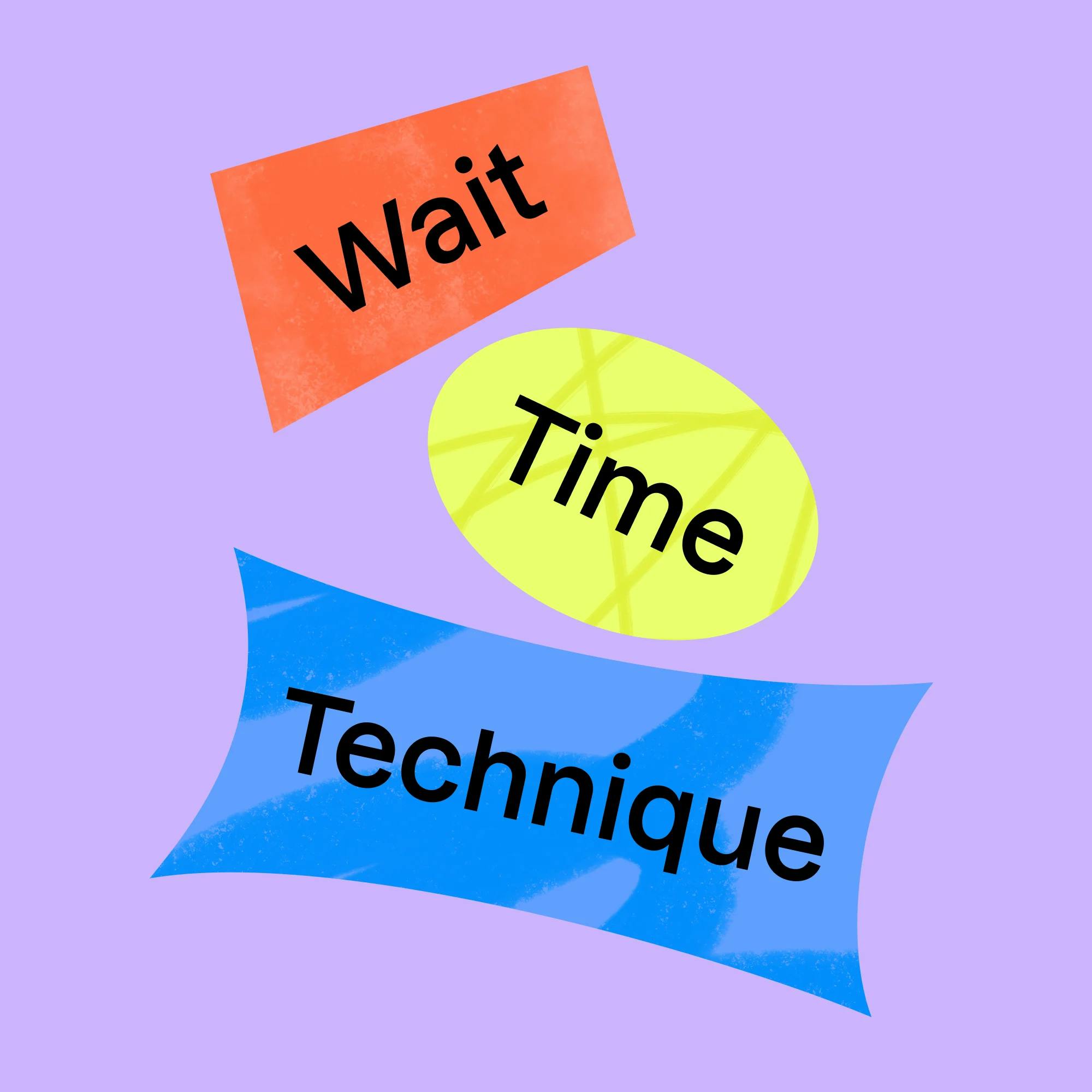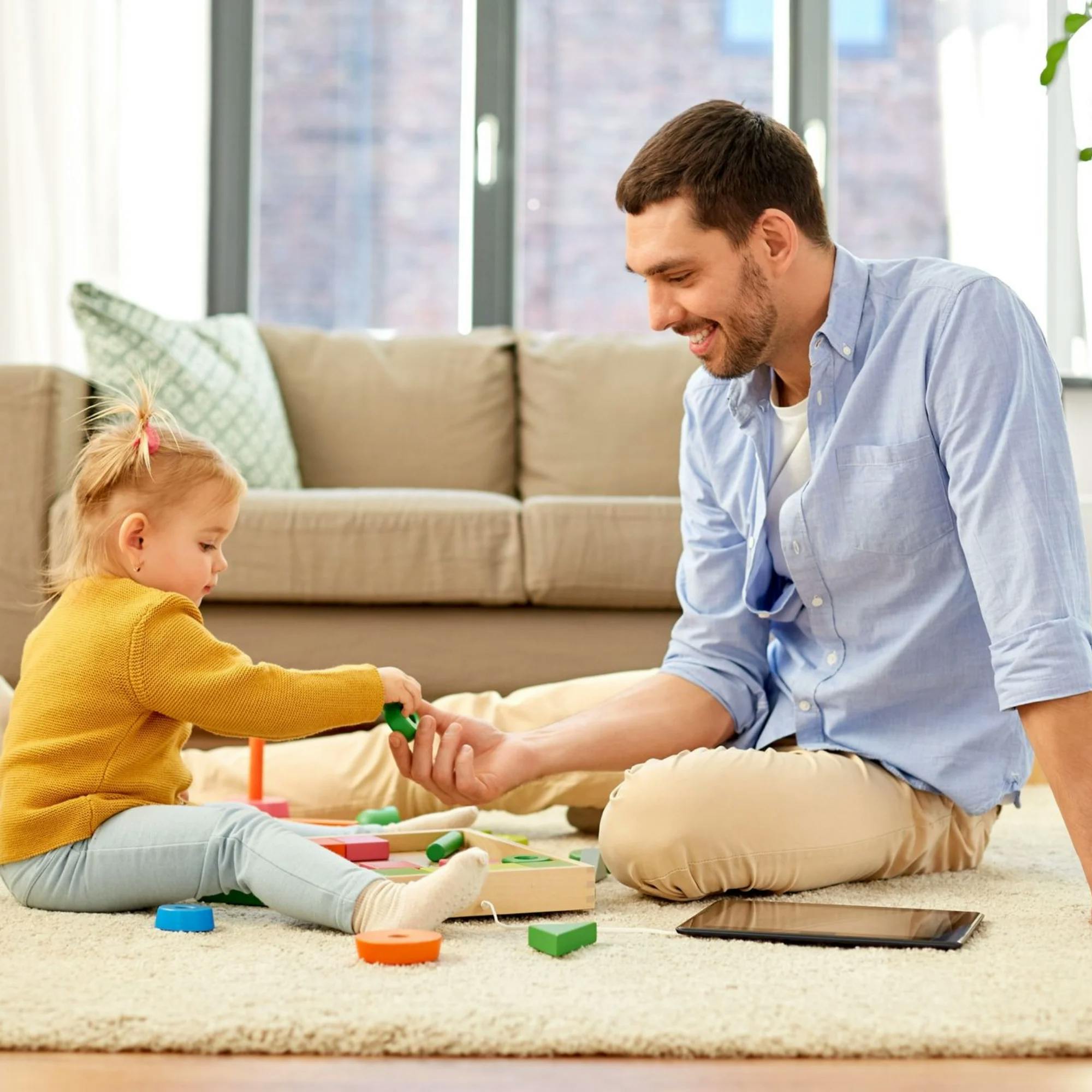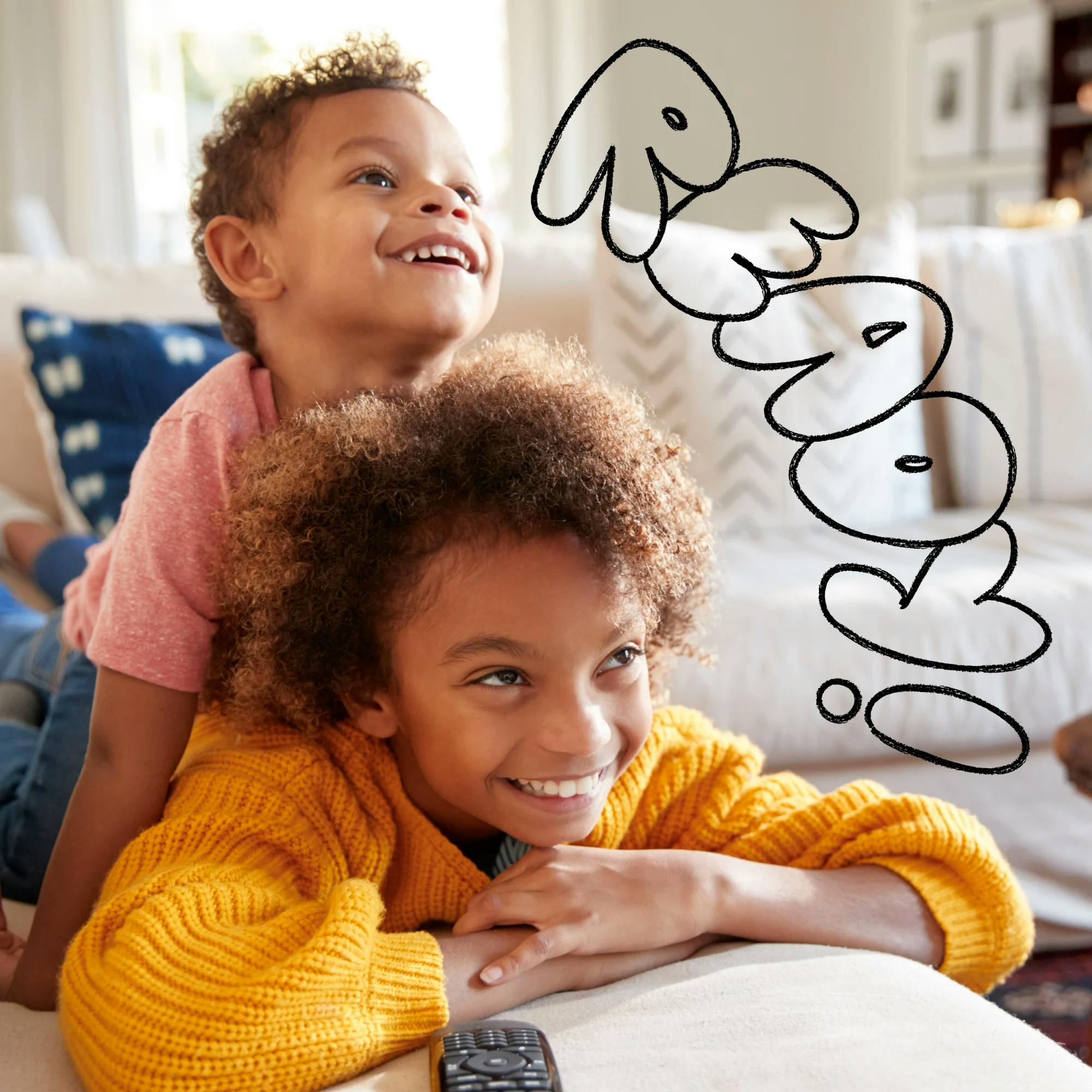Speech therapists use a variety of strategies to help children learn to communicate and talk. But if there’s one technique that could be considered the most widely used–and the most beneficial–it’s likely the one called “wait time.”
Best of all? This is a technique that families can easily use at home, in everyday interactions. Here’s how wait time can help your child use more words and communicate more clearly.
What is wait time?
Wait time is one of the most important techniques to help your child improve their communication skills. It’s typically used with toddlers, early talkers, or kids who aren’t yet talking. It can also be used with children who are using sign language or an AAC system to communicate.
Wait time is all about giving your child enough time to respond to what you’ve asked them to say or do. Wait time helps children learn how they should respond in a certain situation in order to express their wants and needs.
Wait time is all about giving your child as many chances to communicate as possible.
Let’s talk through an example. Say you’re going to give your child a cookie. If you just give it to them, they don’t have to ask for it. But if you present the cookie and pause and wait, this gives your child an opportunity to request the snack. Wait time is all about giving your child as many chances to communicate as possible.
You may be thinking about how your child would respond in this scenario. Maybe they’d be able to ask for the cookie using words. But maybe your child isn’t talking yet, and they don't have the skills to respond verbally. The good news is that wait time can be used with kids no matter what their current communication style is.
Take a look at this fun video from one of our speech therapists to see the wait time technique in action!

One of the best things you can do for your child’s language development
Why does wait time matter so much? It’s important to give your child the time and space to come up with a way to say what they need to. When a child is struggling to communicate, it’s natural to want to jump in and finish the response for them. Maybe you ask them what they want to eat, and they don’t answer you. Or maybe you’re trying to help them say “more” to request something, but they don’t say it quickly. You may end up talking for your child, or giving them the item without them having to ask for it.
These actions may actually be teaching your child not to communicate.
These actions may actually be teaching your child not to communicate. Your kiddo is learning that someone will do it for them, or they’ll get what they need without having to ask. It may take some effort on your part, but providing wait time is one of the best things you can do for your child’s language development.

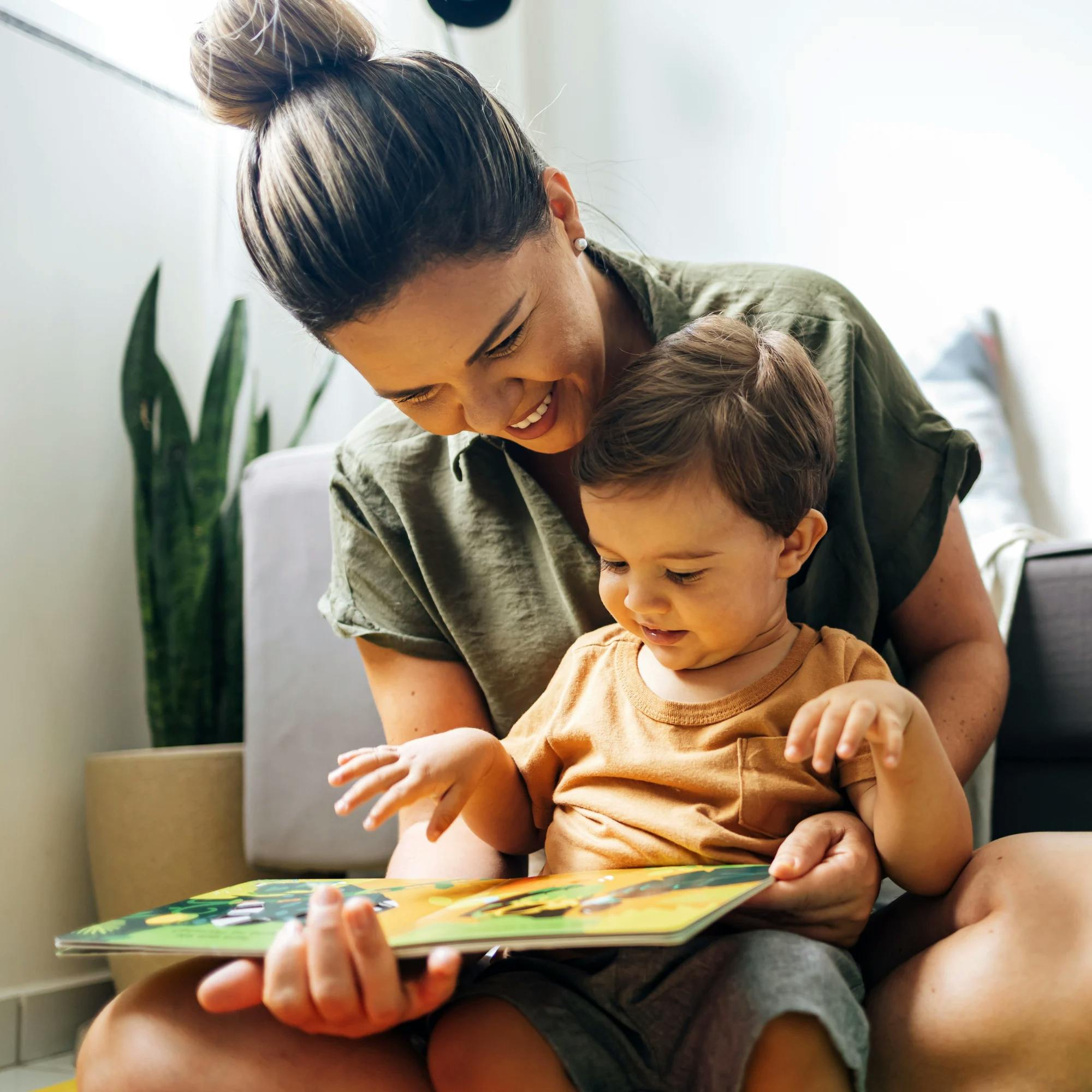
Wait time can help your child learn to talk or use signs
Wait time is best used when your child is working on learning a new communication skill. The great thing about this technique is that it can be adapted to fit many different skill levels!
If your child is learning to gesture and sign, you can use this technique to give them the opportunity to try out these skills.
If they’re already gesturing, you can use wait time to practice verbalizing and saying words. You can even use it to practice increasing phrase and sentence length. For example, if your child says the word “More,” prompt them to say a longer phrase like “More please” or “I want more.” Make sure to wait for your child to say or attempt the phrase before giving them what they want.
How to use wait time with your child
Here’s one example of how you can use wait time to help your child’s communication at home:
Present a toy to your child, but place it just barely out of reach.
Don’t say anything to your child. Just pause and wait.
See if your child will look at you, gesture, or ask for help before moving to grab the toy.
If they don't try to communicate in about 30 seconds, show them what they could do. You can model a word or phrase for them to repeat, or show them a gesture to use.
You can use wait time whenever you’re interacting with your child. Work practice into natural points of your day, like during a meal or when playing together. Or, you can set up purposeful situations to practice this technique.
Know that communication skills can take some time to develop. Sometimes, even if you give your child plenty of wait time, they may not communicate. That’s OK! Don’t keep withholding what your child wants. Wait at least 30 seconds, help your child or model what they could have done, then give them the item and move on.


More practice tips for parents and caregivers
Repetition is very important when using wait time to increase language abilities. Make sure to practice daily, and in lots of different situations, to help your child reach their goals.
Pick fun, motivational activities for practicing wait time. If your child loves to be outside, try wait time when playing outdoors together. (If you pause while pushing your toddler on the swing, will they communicate that they want more?) You can use crafts, snacks, a favorite book–anything that your child is motivated to want.
And if you’d like to learn more about helping your child talk, read our article on communication temptations. You can use this technique to help with wait time.

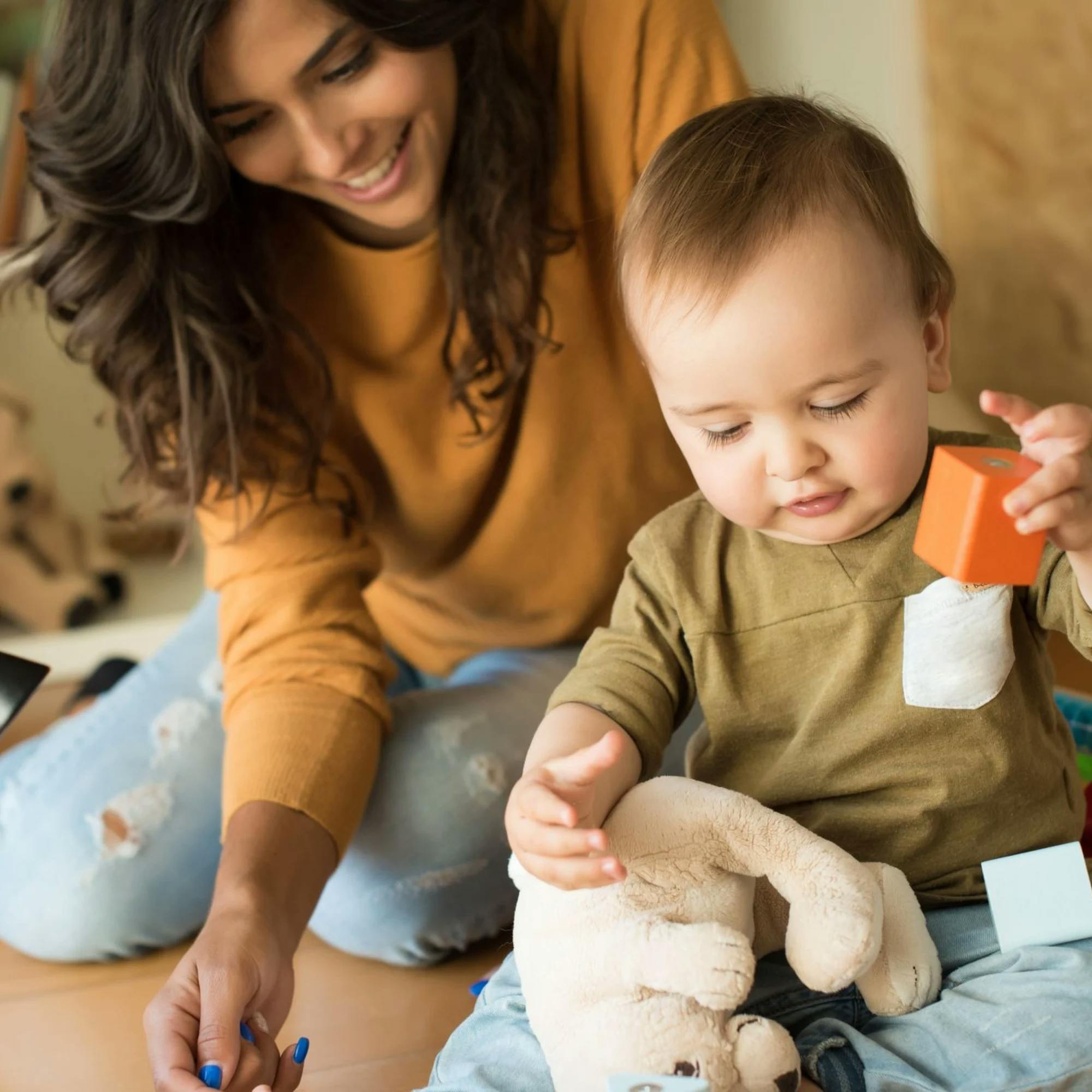
As you try these techniques with your child, remember to be patient. And most important, have fun! Making a genuine connection with your child during these routines will lead to more chances for communication, but it’s also good for your relationship. Just focus on being present with your child and helping them as they learn to communicate or talk. Being a parent or caregiver is a lot of work, but you’re doing incredible things for your child. Bravo–to both of you!
How Expressable Can Help
Concerned your child isn't reaching age-expected milestones? Looking for communication support from a professional? Expressable is a national online speech therapy practice serving children and adults. We treat all major areas of communication and feeding, offer flexible hours including evenings and weekends, and accept most major health insurance plans. We’re proud to have earned more than 3,000 5-star reviews from our clients (4.9/5 average).
Our therapy model is centered on parent and caregiver involvement. Research proves that empowering caregivers to participate in their loved one’s therapy leads to better outcomes. That’s why we combine live, 1-on-1 speech therapy with personalized education and home practice activities for faster progress.
Communication is more than words. It’s how we share how we feel and show who we are. We’re here to help you or your child do just that.

 Abby Barnes, M.S., CCC-SLP
Abby Barnes, M.S., CCC-SLP